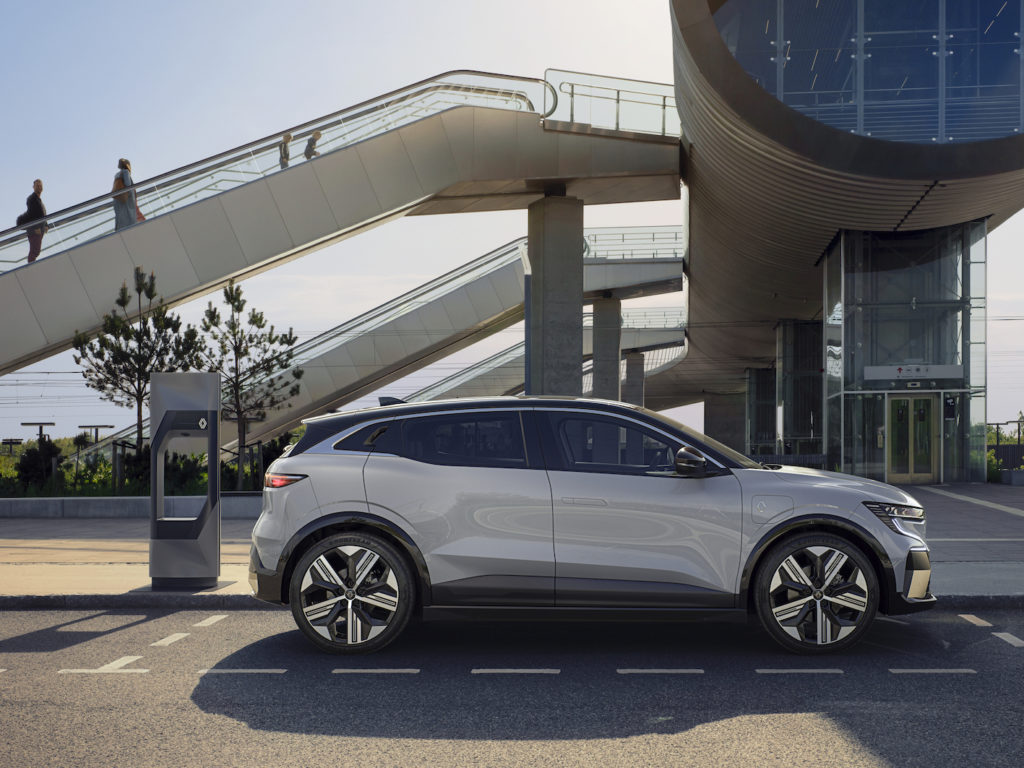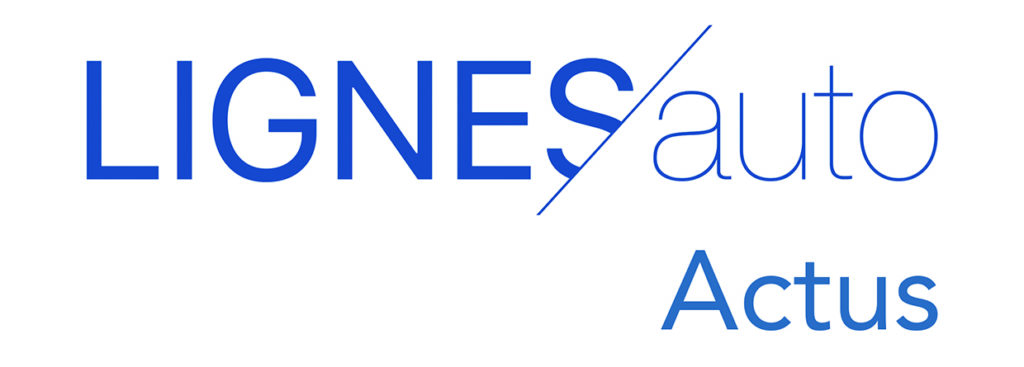
The Renault Mégane E-TECH Electric, which will go on sale in March 2022, is 100% electric. For some time, it will be backed up by the current combustion engine Mégane (particularly with its PHEV engine) and offers two power ratings (130 and 218 hp) and two battery packs (40 and 60 kWh). The range thus varies from 300 to 450 km.
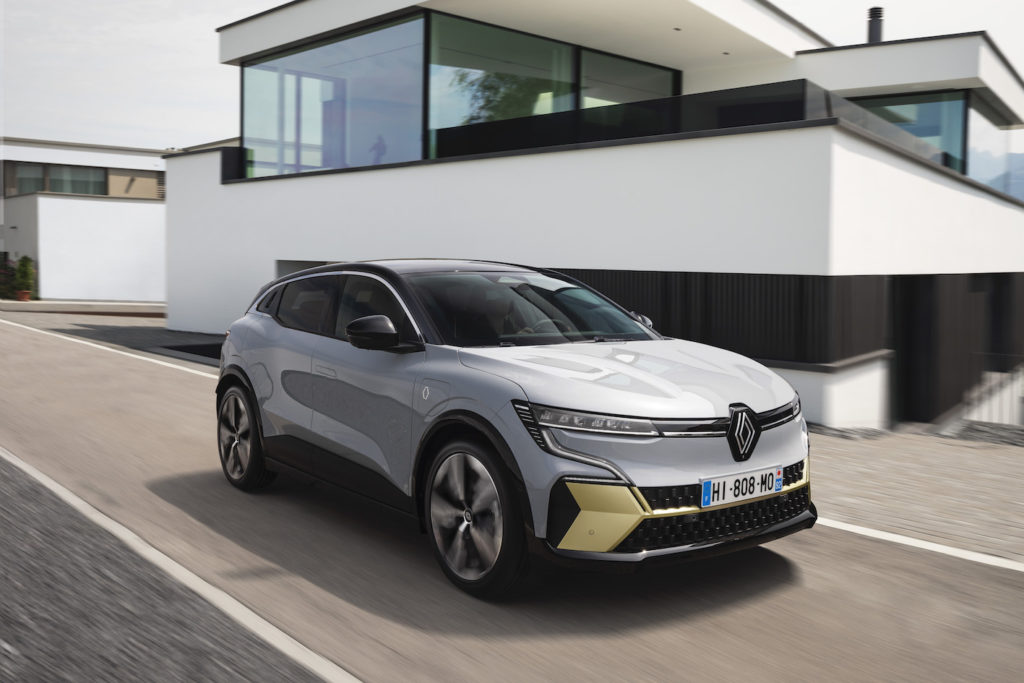
At 4.21m, it is shorter than the current generation but has more room to move around thanks to the electric architecture which offers a battery pack located in the floor and a very compact electric machine. Unlike most of its rivals, the Mégane E-TECH Electric has its engine at the front and is therefore still a front-wheel drive.
AGAINST THE VOLKSWAGEN ID.3

Let’s leave aside the technical aspect, which other sites will gladly detail, to focus on the design aspect, in the broadest sense of the term. Compared to the VW, the Mégane is based on a much more automotive concept, with a long bonnet and a low stance, whereas the Volkswagen is more of a single volume car with a large window in front of the front door, as on the MPVs. As a result, the French car is less high (1.50 m) than the German (1.57 m). This is undoubtedly to the benefit of C02 emissions.
Four points of convergence and… divergence!
In 1, despite their different architectural themes, both cars have a windscreen that falls in almost the same place in relation to the front wheel axis. But in 2, the steering wheel is set further back on the VW. In 3, the VW makes up for it in terms of on-board volume thanks to a wheelbase of 2.77 m compared to the Mégane’s 2.68.
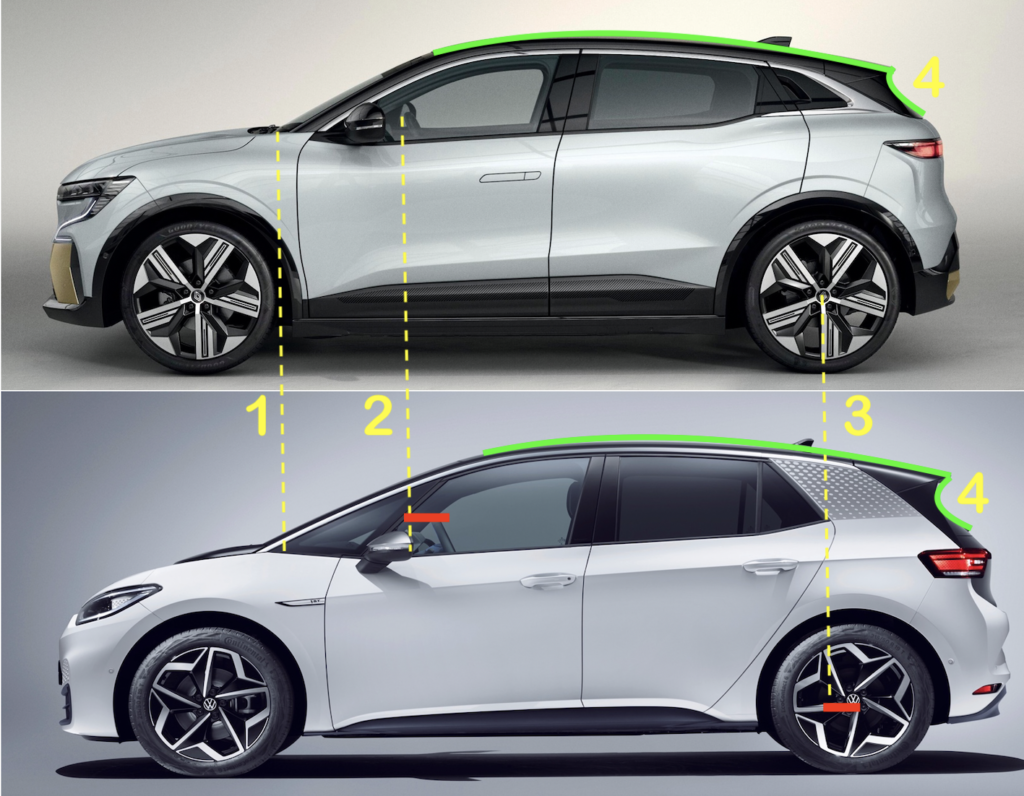
In 4 (green line), we note that the aerodynamic research does not offer much latitude with the same tricks retained: a receding roof and long rear spoiler. In this respect, the two rivals are perfectly identical!
A very different treatment of volumes

Above, we note two different strategies: a desire to propose an object outside the automotive codes with the German. Its sides are practically “cut” like in the 1960’s, without any major modelling work, the rear panel silk-screen printing looks “techno” while the almost completely glazed and black tailgate is more reminiscent of the world of smaller cars (108, Aygo, etc.). With the Mégane, the modelling work is much more substantial and the volume remains completely within the automotive world. The handles are flush at the front and hidden in the rear pillar. The Renault is more statutory.
Renewed identities
Both new models have incorporated their brand’s new logo. In the case of Volkswagen, it is framed by a light rail that extends to the headlights, which are more generous in size than those of the Mégane.

The latter also introduces the new logo in larger proportions than on the VW. The Renault opts for a capped (and highly modelled) bonnet, whereas the ID.3 has chosen the difficult route with a “coachbuilder” type bonnet that is almost flat. As for the black mass at the base of the VW’s windscreen, it visually shortens the length of the bonnet, which is not necessarily ideal for the targeted segment.
When style comes through architecture
The Mégane inaugurates the new platform (in the range Renault) dedicated to 100% electric vehicles. Nissan preceded it with the Ariya. The ID.3 in its time did the same with the MEB platform, a base that has since hosted a multitude of silhouettes (ID.4, ID.5, Q4 e-tron, etc.). The main differences between the two are that the batteries are only 11 cm thick on the Renault platform and its engine is located at the front. It is a front-wheel drive car, whereas the ID.3 is like a… Beetle, with a rear engine.
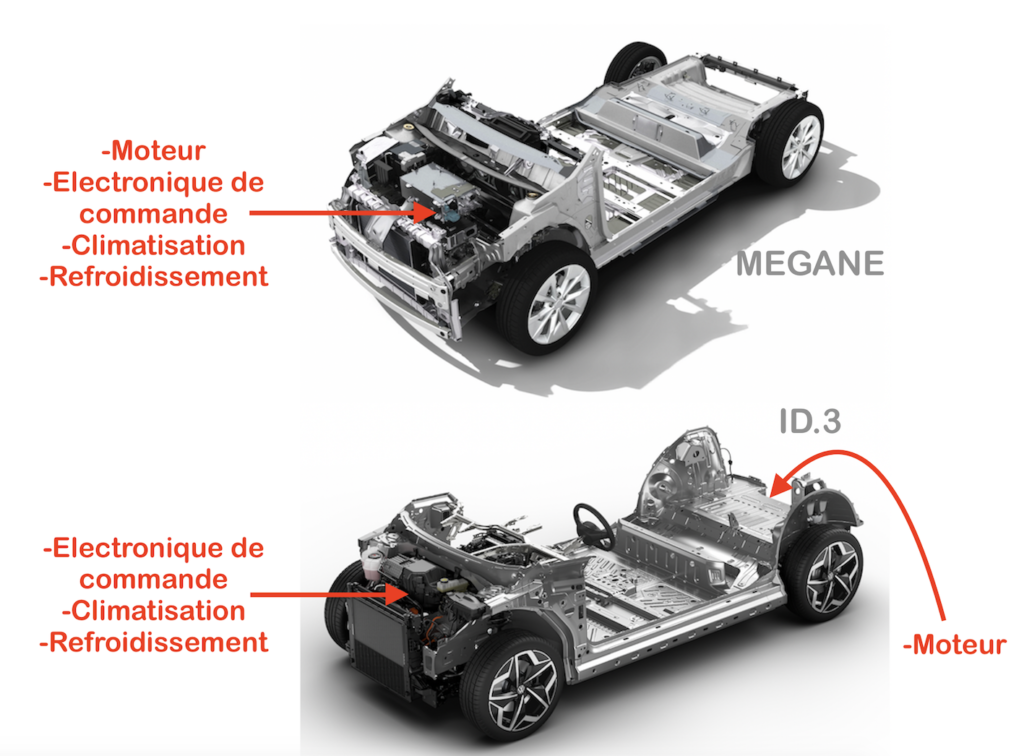
Obviously, the electronics help to find the ideal behaviour on both cars, but the boot volume suffers on the German (385 l vs 440 l). The technical drawings below show the higher boot floor on the ID.3 compared to the Mégane and its totally flat rear floor.
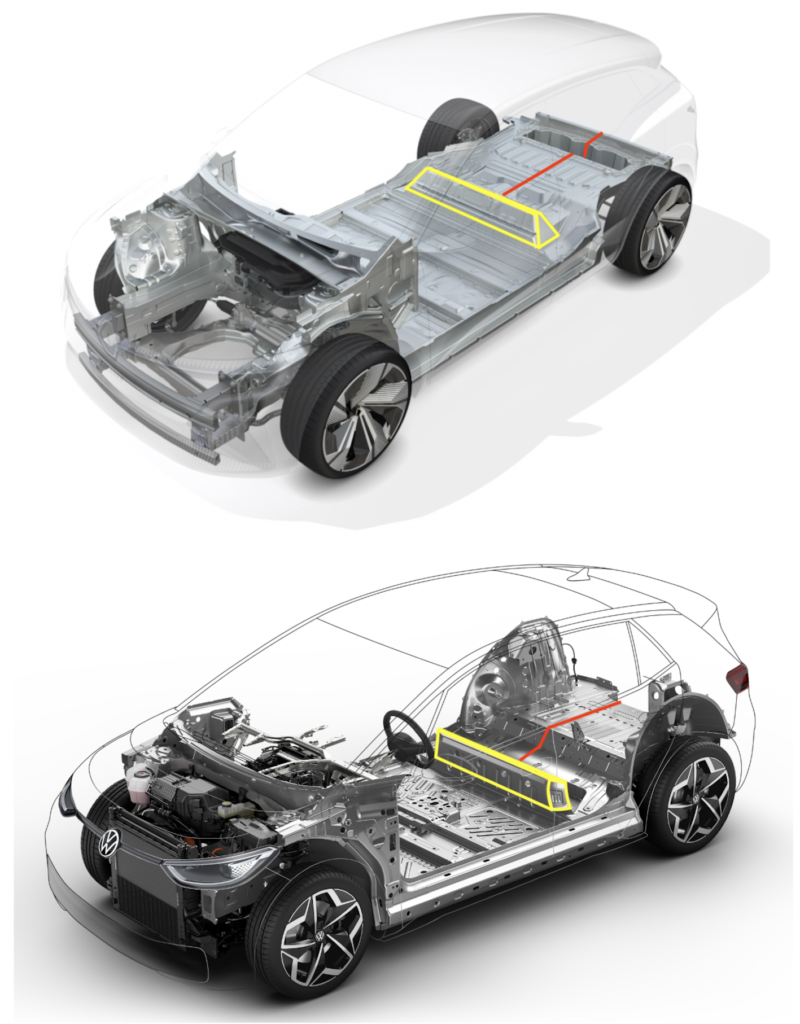
On board, a world apart
The two separate screens on the ID.3 are not integrated into the dashboard. Those of the Mégane inaugurate the Open R concept in the shape of an inverted L and group all the information in a single element. As for the design of the doors and their trim, the two manufacturers have chosen different paths: minimalist on the Volkswagen, rather premium in the Renault.

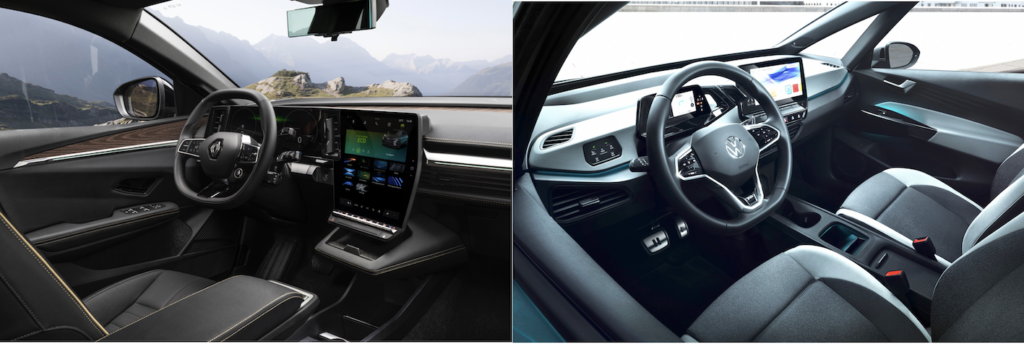
The ten key points of the Mégane’s dashboard
In 1: the Open R concept brings together the two driver’s instrumentation and infotainment screens in a single unit. (See the interview with Laurens van den Acker on this subject on this site).
In 2: the design work on the roof controls and mirror is very well done.
In 3: the finely chiselled wood is present on certain versions and brings a very “premium” touch to this level of the range.
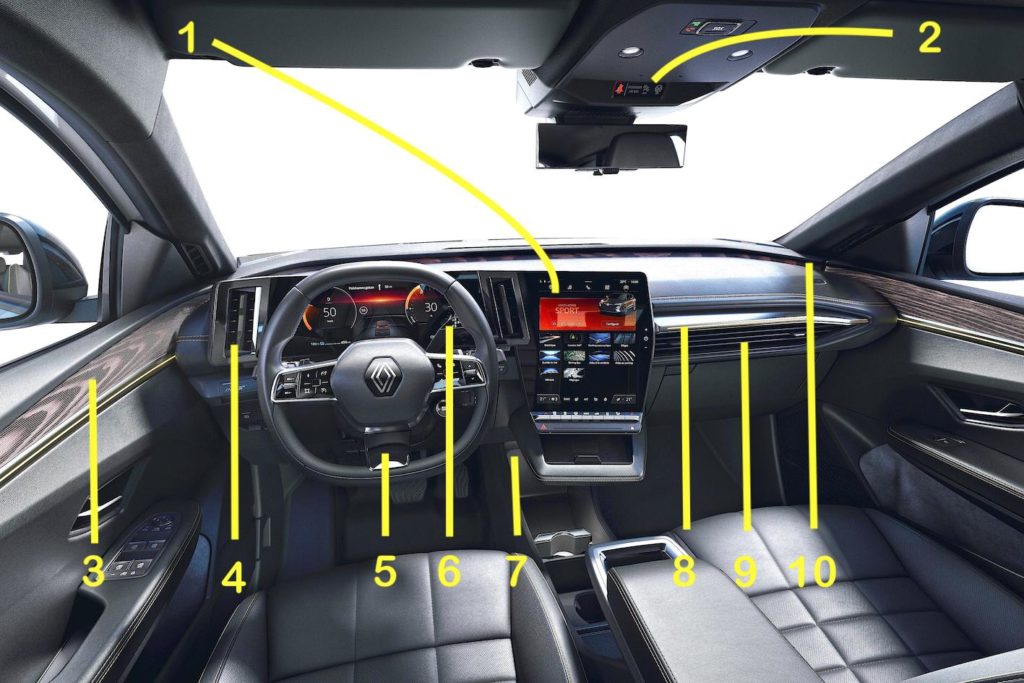
In 4: the left and central air vents are integrated into the Open R package.
In 5: the 3rd steering wheel spoke is black to highlight only the two sides.
In 6: the front/rear/neutral control lever moves behind the steering wheel.
In 7: the console plunges under the dashboard, with its storage compartments.
In 8: on certain versions, the aluminium decor is crossed by ambient lighting.
In 9: the passenger air vents run the length of the dashboard.
In 10: the wood decor extends to the rear of the dashboard.
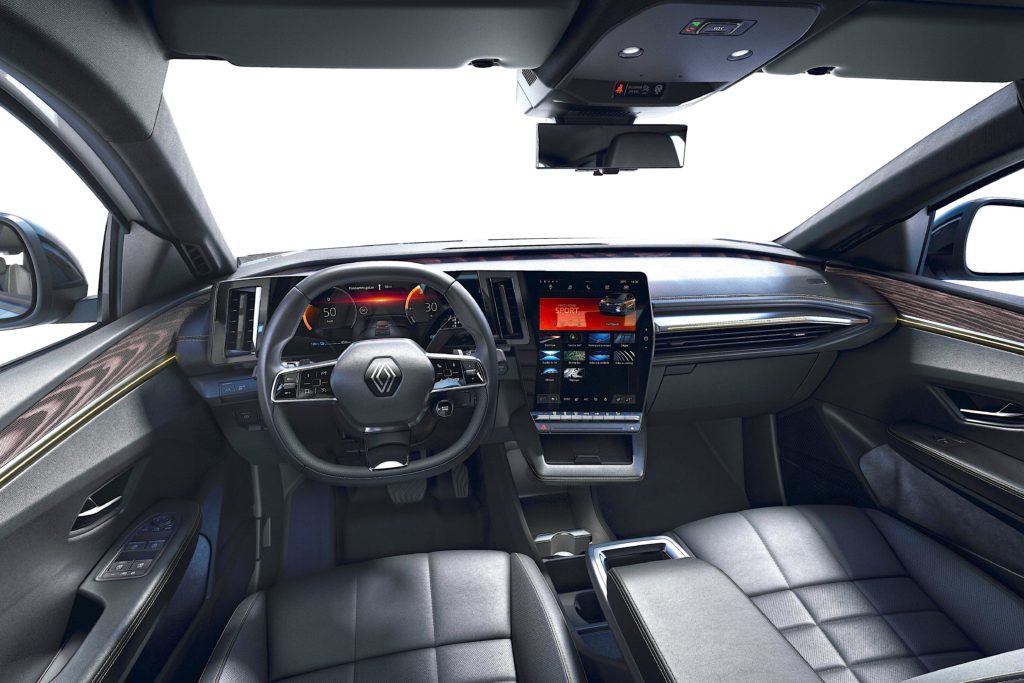
Same customers, but two different philosophies
The two competitors did not follow the same design philosophy at all. Volkswagen began the genesis of the ID.3 well before the Renault. For VW, it was necessary to create a breakthrough for its 100% electric compact car in order to distance it from the Golf 8, which appeared practically at the same time. For Renault, the situation was different, since the Mégane E-TECH Electric will no longer be accompanied by a combustion Mégane. For this reason, it is adorned with very automotive codes, without forgetting the notion of revolution necessary to enter the automotive world of tomorrow…
